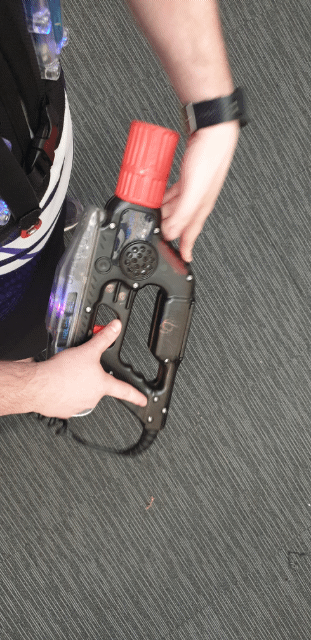Helios Grips
Over the weekend, LSNZ hosted its first ever Helios competition. This was the first opportunity a lot of our players have had to play on the current competitive system. The Helios gun takes some getting used to, and our new players struggled to find grips to suit their play style. In this article I go over some of the more popular grips that top level players use to master the weapon that is the Helios hand cannon.
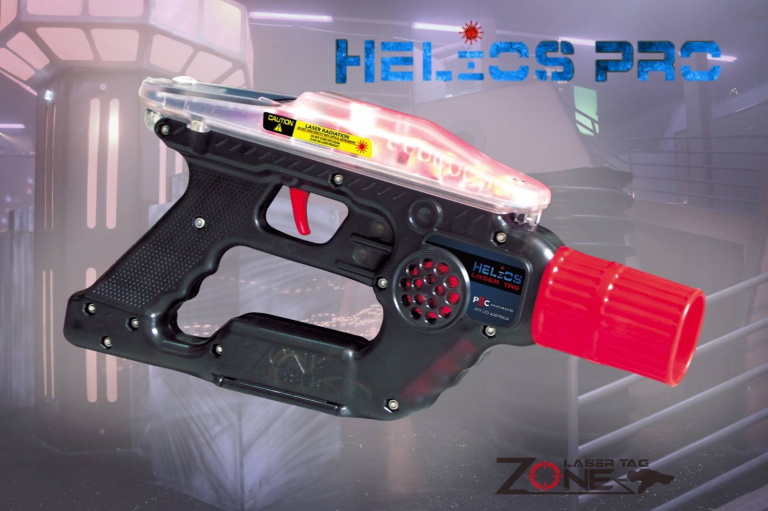
One of the most distinctive features of the Helios phasor is the bulbous hit zone right along the top. This is a large target for opposing players and is easy to hit if you are cornering incorrectly. Many newer players that pick up a Helios phasor fall into the trap of playing with a “gun-out” play style. This means that the hit zone of the phasor is facing away from the player holding the gun. One thing to keep in mind about gun-out grips though, is that they have some benefit in close quarters when stuns are enabled; if an opponent tags your gun instead of your chest, you’ll only be stunned instead of deactivated.
Rifleman
The most common gun-out play style is some variation of the rifleman grip. This grip seems like a natural way to hold the gun and is how many people pick up a Helios phasor their first time. This grip is unfortunately very limited in the angles that it can shoot without some adjustment. It is very difficult to swap to a high grip for off-handed corners too. In general, I would advise against using this grip, even for new players.
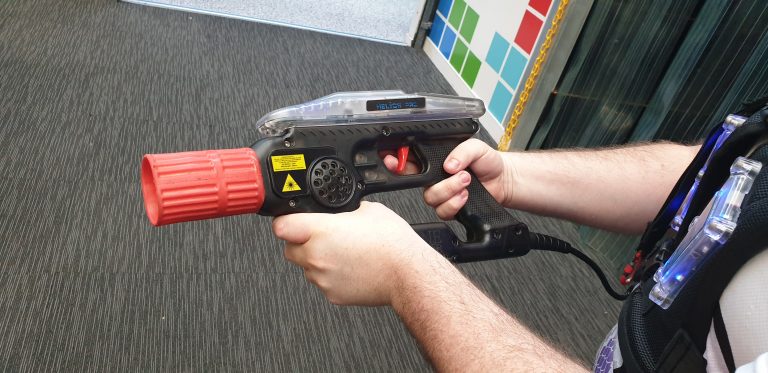
Wiggly Worm
Another gun-out grip that deserves a mention is affectionately known as the wiggly worm. This play style suites close quarters brawling and supports a number of shot angles not possible with other grips. It is not suitable for holding defensive positions or moving quickly through the maze. In this grip, the player holds the front of the gun much like a rifleman grip, but switches the trigger hand to a thumb grip. The result is the resting gun angle pointing towards the ceiling. This provides access to a range of shots not possible on other grips, including accurate over-the-shoulder shots and off-hand angles. This grip is good for playing against left handers and in general for LOR.
Advantages:
Very quick left-right switch up.
Unusual firing angles makes it hard to play against.
Disadvantages:
Difficult to fire directly ahead of you.
No high grip change up.

Standard
The most common gun-in grip that top players use involves holding your front hand on top of the gun and your trigger hand underneath, using your middle finger for the trigger. This grip is comfortable and accurate, and allows a simple switch to a high grip by rotating the trigger hand slightly, changing your trigger finger to your thumb as you raise the gun above your head.

The low cross for this grip is a bit awkward and has a fairly limited angle when firing (you definitely can’t shoot behind you with this grip). Be careful when using a low cross for anything but a flick shot since it brings your arm up in front of your chest. However, this cross can be performed higher without this issue.
Advantages:
Easy to aim normal shots.
Quick to learn.
High grip transition is possible.
Disadvantages:
At close quarters this grip offers limited ability to shoot from a range of angles.
Cross is awkward and limited.

The Claw
My personal favourite: The claw grip offers versatility unmatched by other styles. This technique is very difficult to learn and therefore suits expert level players. The grip is analogous to the pen style grip that table tennis players might use to increase their control. To use this grip, hold the front of the gun with your index finger on the two-hand sensor while gripping the front of the gun. The trigger hand forms the “claw” around the gun handle while using the thumb to pull the trigger. This is similar to the high version of the standard grip.
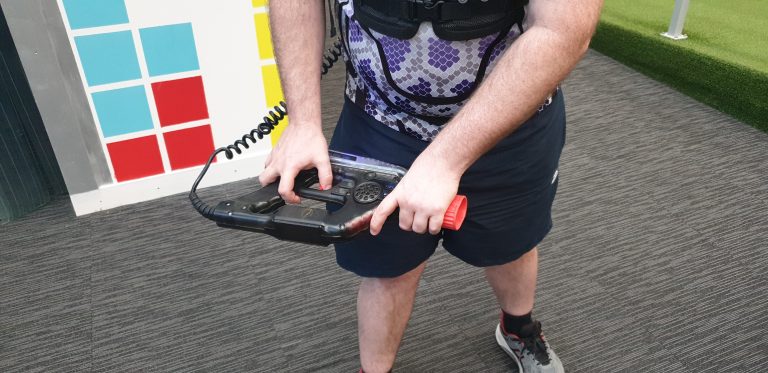
This grip offers a high switch without moving either hand on the phasor. It is the only grip covered here that allows this flexibility, making it ideal for inside base play. This same flexibility allows you to change from low to high in a LOR ring or close quarters in the maze, surprising your opponent to gain an advantage.
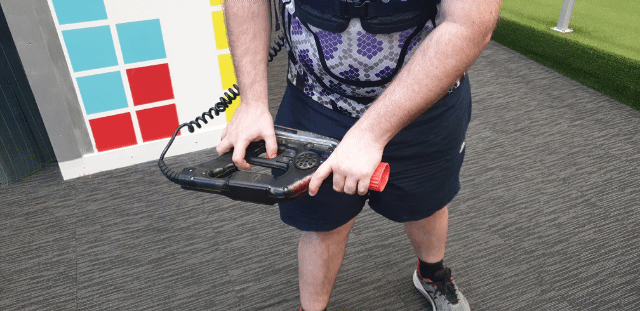
The biggest drawback with the claw grip is the straight cross is more difficult than a standard grip. However, when done correctly it can be just as fast and result in a better range of shot angles for the player.
Advantages:
Highly versatile.
Huge potential for shooting a range of angles.
Excellent for dueling and paneling.
High grip transition without grip change.
Disadvantages:
Uncomfortable.
Difficult low cross transition.
Hard To master.

